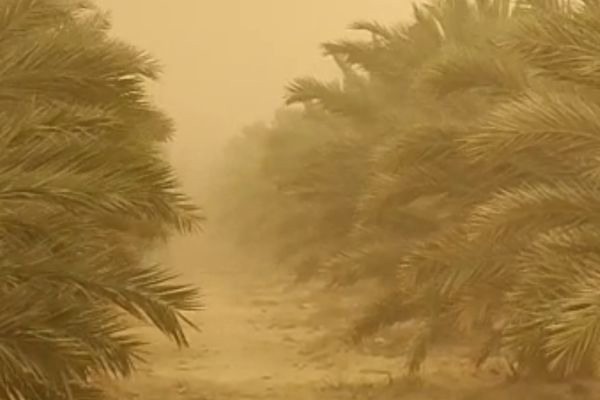A massive sandstorm ravaged Egypt in early June. Violent winds laden with dust and sand severely disrupted traffic in the country. Its impact on agriculture, and arboriculture in particular, was grandiose, with entire harvests destroyed. Ramadan Elsayyad, Palm Hills Export Manager, describes the impact of the sandstorm on the date industry.

Ramadan points out that sandstorms are frequent in Egypt, but June's storm was particularly violent: "Sandstorms represent a major environmental challenge for farmers growing palms yielding semi-dry dates. In our region (the Bahareia oasis) in western Egypt, storms generally occur in March, April, and May. During the current season, a severe sandstorm accompanied by high temperatures occurred at the beginning of June".
Date growers, therefore, take the parameter of sandstorms into consideration and adapt their farming operations accordingly. Ramadan explains: "Palms, particularly those producing semi-dry dates called Tamer, are commonly grown in deserts and oases. However, these trees are very sensitive to sandstorms, which are frequent during the summer months when temperatures are high. To preserve the health of these plants, adequate irrigation, and water balance should be maintained to reduce the risk of dehydration during sandstorms. If a sandstorm occurs during critical stages of fruit development (such as fruit set, Hapapok, and Kemry stages), fruit damage can be severe."
Ramadan continues: "Sandstorms can cause physical damage to fruit by leaving scars or bruises, affecting their commercial value and overall quality. Sand and dust particles can also obstruct tiny leaf pores, called stomata, which can hinder photosynthesis and plant growth. In extreme cases, sandstorms can even uproot or break palm trees, causing considerable damage to orchards. To mitigate the negative impact of sandstorms, farmers are taking preventive measures such as irrigating the plants at night before the hot sandstorm constitution.
Given the scale of the sandstorm in early June, damage was unavoidable. "In the date sector, losses are at least 25% of volumes. All varieties are affected, including Medjool, the flagship of Egyptian dates. This means that next season's volumes will be 25% lower than forecast, but this will not impact prices," said the exporter.
"The first harvests will start on August 25, 10 days earlier than last season," concludes Ramadan.
For more information:
Ramadan Elsayyad
Palm Hills Dates
Tel: +20 102 008 4117
Email: info@palmhillsdates.com
www.palmhillsdates.com
